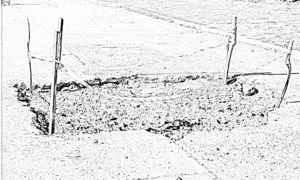As an estimator, you’re the lifeblood of any construction or remodeling project. You’re the one who ensures that the client’s vision is turned into a reality, within budget, and on schedule. But even the most experienced estimators can run into problems.
In this article, we’ll take a look at some of the most common problems encountered by estimators, and we’ll offer some solutions to help you overcome them.
Understanding the Requirements
When you first start estimating, you’ll quickly find that there are a lot of common problems you’ll encounter. Most of these are due to a lack of understanding of the requirements, and they can be easily avoided with some education and preparation.
For example, one common mistake is Construction estimating the quantity of a product without taking into account specific requirements. This can lead to either over- or under-estimating the amount, which can be costly for the company. Another common problem is not taking into account the manufacturing process. This can lead to inaccurate estimates and wasted time and resources.
The best way to avoid these and other common problems are to learn about the requirements and understand the manufacturing process. With this knowledge, you’ll be able to give accurate estimates. That reflects real-world constraints and ultimately save your company time and money.
Overcoming Scope Creep
As an estimator, you’re likely to encounter one common problem: scope creep. This occurs when the customer or client asks for (or demands) changes to the project that weren’t originally agreed upon.
This can be a real challenge, especially when you’re trying to stick to the original budget and timeline. But it’s important to remember that you’re the expert in estimating, and you know what’s possible and what isn’t. So don’t be afraid to stand your ground and explain why the changes aren’t feasible. Of course, there’s always room for negotiation. But it’s important that you don’t let the customer take advantage of your expertise. You’re the one who needs to maintain control of the project. So make sure you stay firm on your original estimates and specifications.

Estimating Resources and Time
One of the most common problems encountered by an estimator is accurately estimating the resources and time needed to complete a project. This isn’t always easy, because there are so many variables that can affect the outcome.
For example, you may think a job will only take a day to complete. But if the customer decides they want to make changes last minute that can throw your timeline off. Or, you may need to account for additional labor or equipment. If the job is more complex than you first thought. It’s important to be as accurate as possible when estimating because underestimating can lead to delays and frustrated customers. On the other hand, overestimating can cost you money and time that you don’t have. So it’s a delicate balancing act, and it takes experience and a lot of patience to get it right.
Dealing with Multiple Stakeholders
You may also deal with many stakeholders when working as an estimator. Working closely with multiple teams and departments can get overwhelming. Especially when each has different expectations and demands that need to be met. You will need to communicate clearly and effectively with all stakeholders and assess their needs and expectations. Identify potential obstacles or risks, and create a shared understanding of how to move forward. To be successful in this role, it’s essential that you’re able to handle complex situations with finesse and maintain a high level of organization.
Managing Price Pressure
As an estimator, you’ll likely encounter the problem of clients pushing for a lower price. Though it’s natural for customers to try to save money. This can be problematic if the price is too low for your business to make a profit.
If you find yourself in this situation, there are a few steps you can take. The first is to educate your clients about the importance of quality when it comes to projects. You can also explain why certain materials may be necessary and provide data that supports your argument.
Another solution is to leverage technology to work faster and more efficiently. This will make you more competitive in the market and allow you to provide better services without sacrificing quality or pricing. Finally, negotiate with clients by suggesting alternatives. That helps them save money while still getting what they need from your services.

Dealing With the Unknown Factors
Being an estimator is no easy task—there are so many unknowns. That you have to take this into consideration when providing estimates. It includes everything from materials to unforeseen circumstances such as bad weather.
So how do you deal with these unknowns? Well, first, it helps to have experience in the field. So you can predict and account for potential problems that may come up during a project. Second, it’s important to understand the project as a whole and break it down into its individual components. So that you can make each estimate as accurate as possible.
Finally, ask questions before providing estimates—don’t assume anything. Ask questions about the materials. That will be used and any other variables that could affect the cost of a project. It’s also helpful to discuss potential contingencies that could come up during a project and factor them into your estimates.
Conclusion
When it comes to common problems faced by estimators, communication issues and changes to the project scope often take the top spot. Misunderstanding and changing project requirements can lead to delays and cost overruns, so it’s important for estimators to be able to effectively communicate with clients, contractors, and other project stakeholders.
In addition to communication problems, estimators often have to deal with incorrect or incomplete data, budget constraints, and unrealistic deadlines. However, with the right tools and resources, most of these common problems can be overcome.















































